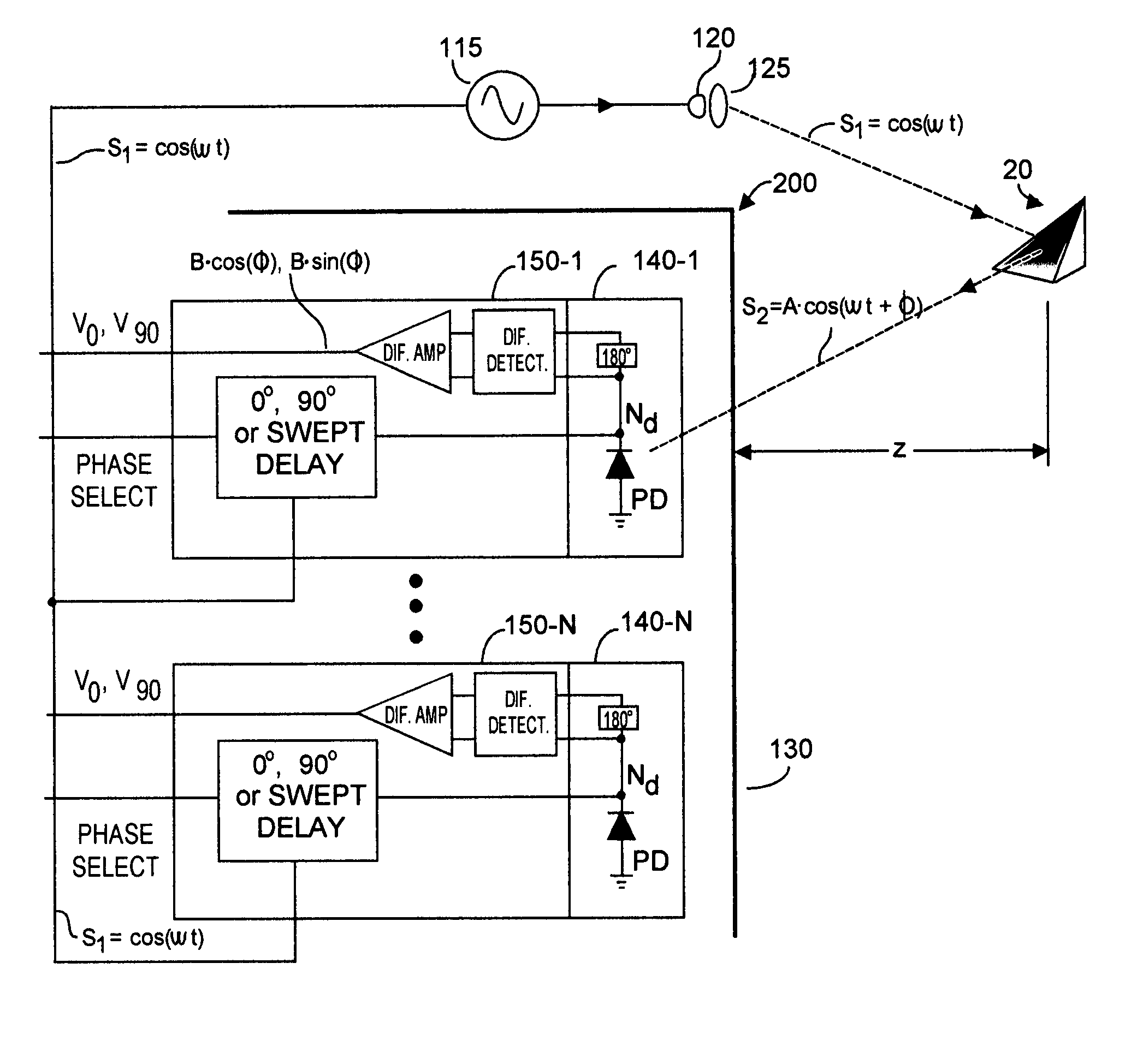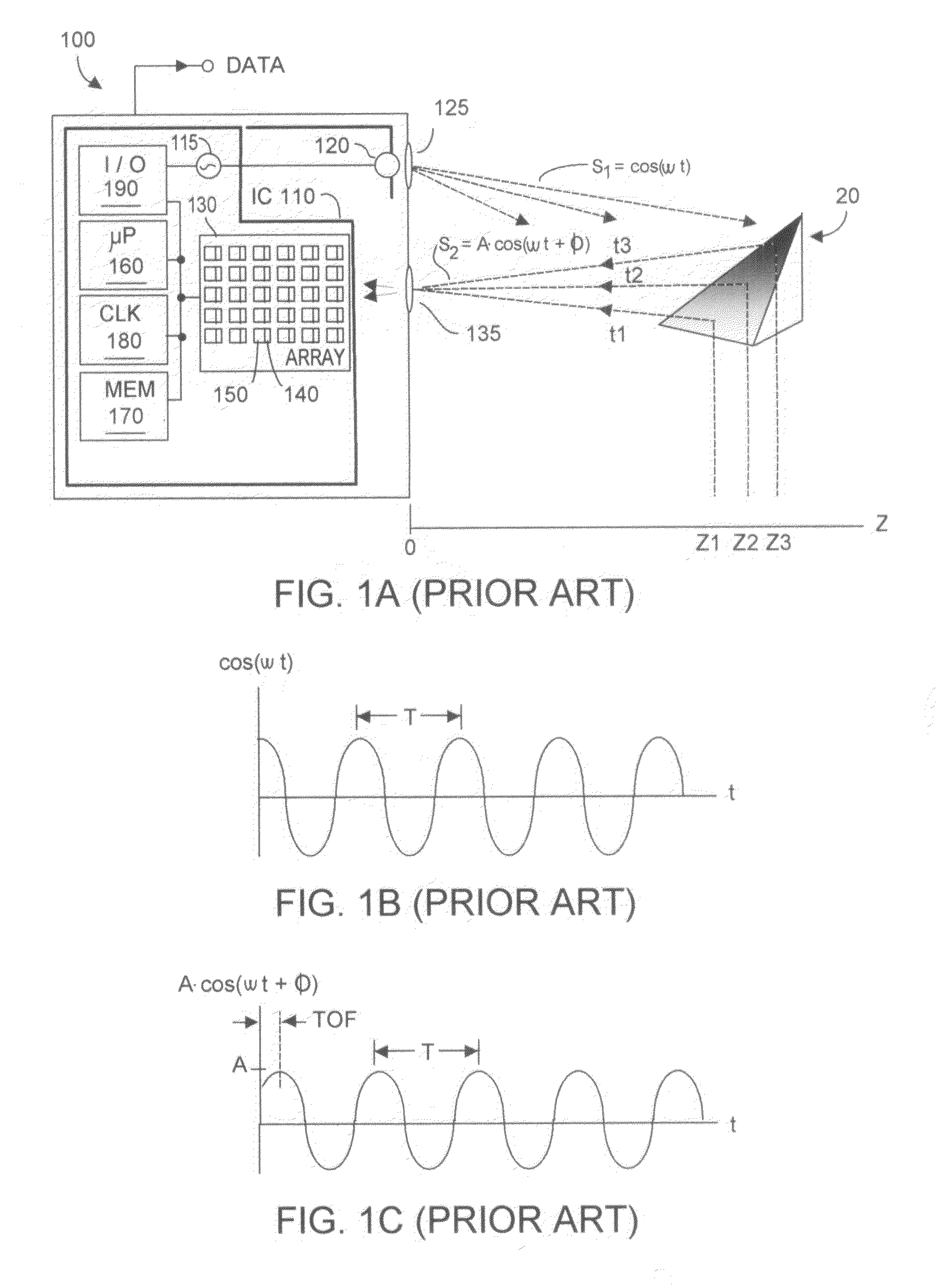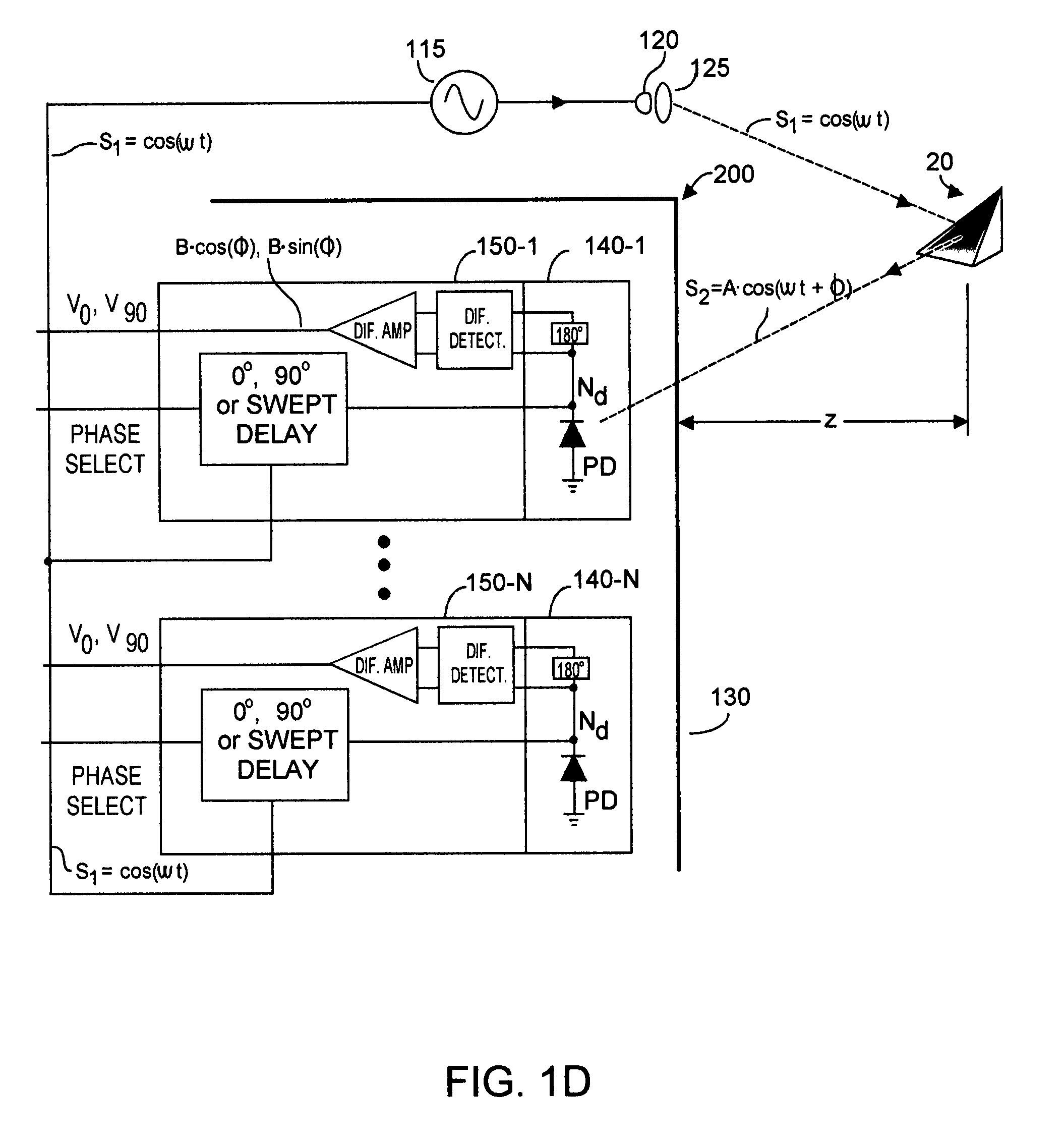Method and system for fast calibration of three-dimensional (3D) sensors
a three-dimensional (3d) sensor and fast technology, applied in distance measurement, height/levelling measurement, instruments, etc., can solve problems such as phase errors, interpolation errors that can only be reduced, and errors that can be several cm in magnitud
- Summary
- Abstract
- Description
- Claims
- Application Information
AI Technical Summary
Benefits of technology
Problems solved by technology
Method used
Image
Examples
Embodiment Construction
[0051]In brief, prior art “by example” calibration techniques require repositioning a target object relative to a TOF system and recording data. During run-time of the TOF system, the recorded data is interpolated to provide calibration between phase and distance. By contrast, the present invention calibrates using a stationary target object and electrically introduces phase shift into the TOF system to emulate relocation of the target object. The relatively few data samples thus taken are used to build a model that preferably is a parameterized mathematical representation of the general form x+sin(x). The phase-vs-distance model data is stored as a look-up table that is evaluated (rather than interpolated) during actual run-time operation of the TOF system. The acquired data may be purged once the model data has been stored. Advantageously calibration according to the present invention takes less time to perform, perhaps minutes contrasted with tens of minutes using prior art “by e...
PUM
 Login to View More
Login to View More Abstract
Description
Claims
Application Information
 Login to View More
Login to View More - R&D
- Intellectual Property
- Life Sciences
- Materials
- Tech Scout
- Unparalleled Data Quality
- Higher Quality Content
- 60% Fewer Hallucinations
Browse by: Latest US Patents, China's latest patents, Technical Efficacy Thesaurus, Application Domain, Technology Topic, Popular Technical Reports.
© 2025 PatSnap. All rights reserved.Legal|Privacy policy|Modern Slavery Act Transparency Statement|Sitemap|About US| Contact US: help@patsnap.com



